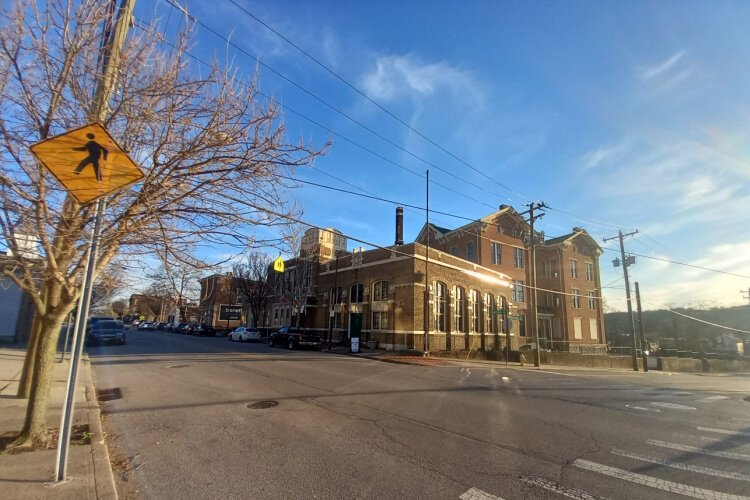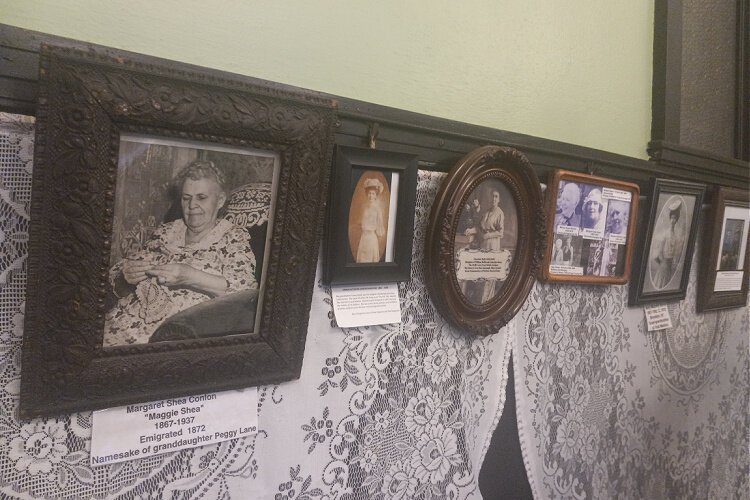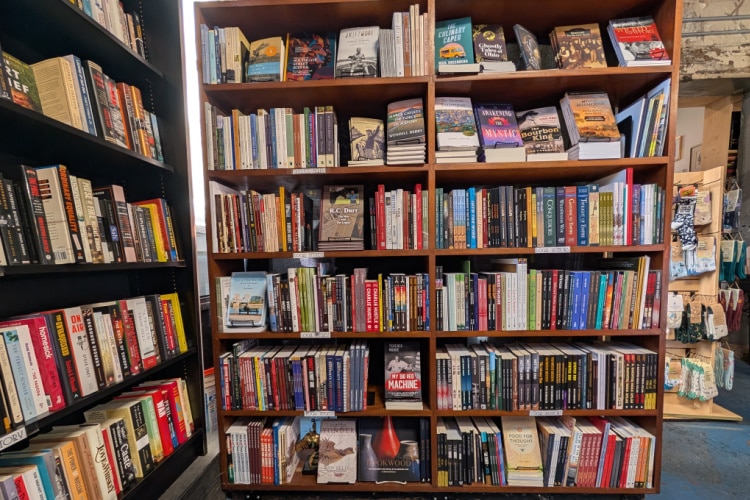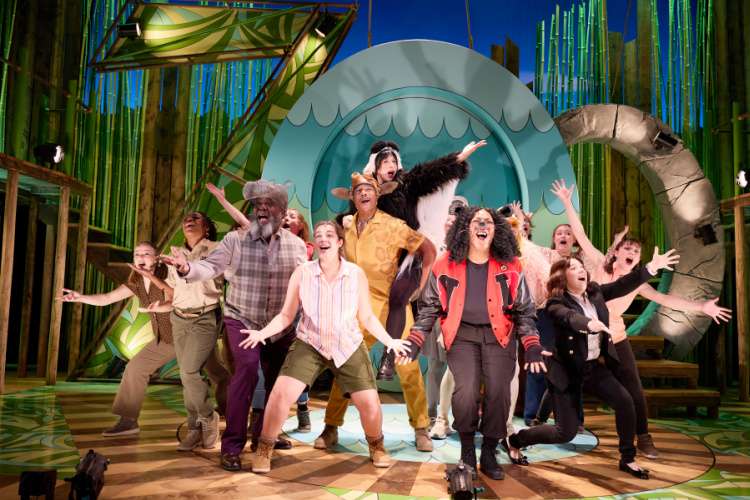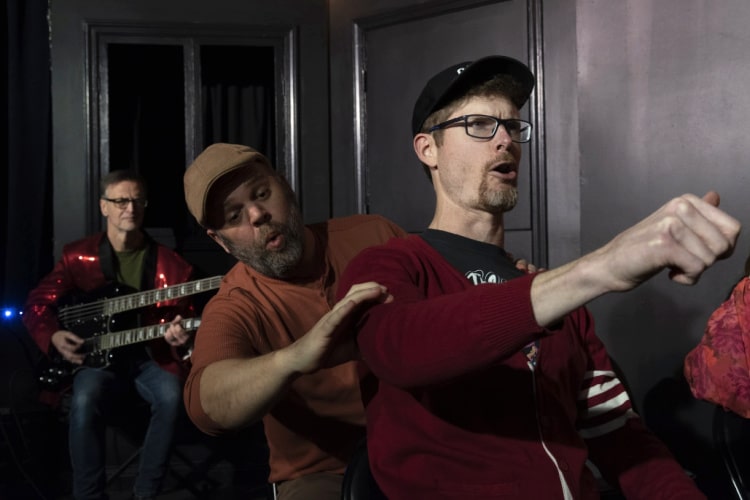Cincy Go Bragh, Boyo! Local descendants preserve Irish culture
Irish immigrants have made monumental contributions to Cincinnati’s evolution. As offspring of Irish immigrants became settled into local society, those of Emerald Isle lineage dispersed widely throughout the city.
It’s easy to perceive Cincinnati’s heritage as monolithically German. My own lineage (note my surname, mother’s maiden name was Herrmann) reflects the city’s historical narrative. However, the Queen City’s cultural mosaic yields far greater diversity than the “Zinzinnati” stereotype. In that vein, Irish immigrants have made monumental contributions to Cincinnati’s evolution. Its Troubled (capital intentional) and complex history have engendered a resilience and passion among Irish denizens crossed the Atlantic and enriched our nation’s evolution. Listen to The Pogues’ “Thousands Are Sailing”, a paean to the Irish migration to the U.S., and try to remain unmoved. I dare you.
Their cultural footprints may be more pronounced in New York and Boston, but the sons and daughters of Ireland have made an impact on the Queen City that transcends St. Patrick’s Day festivities.
Why they came
Ireland’s global cultural influence has always been outsized relative to its population. Including Northern Ireland, which is part of the United Kingdom, the total Irish population numbers about seven million people.
According to a timeline developed for a University of Cincinnati Honors Program seminar entitled “The Irish in Cincinnati,” the initial wave of approximately 200,000 Irish immigrants arrived in the American colonies in 1717. Fleeing religious conflict with the British and economic struggles in their native country were core motives for crossing the Atlantic.
Pat Mallory worked for the city’s printshop, but his true passion was documenting the history of Irish immigration’s impact on Cincinnati. He fostered his love for this avocation because “I wanted to see what was being written jived with what I heard. I was always looking for new information, updates from historic archaeological studies relying on documentary evidence.”
Mallory, who would become president of Cincinnati’s chapter of the Ancient Order of Hibernians, an Irish fraternal organization, noted that Catholic migrants outnumber Protestant newcomers by an approximately a “30 to 1” margin: “It wasn’t as much about religion per se as it was simple fact that Catholic members of Irish society were economically disadvantaged and in search of a better life,” he said.
Opportunity became a perpetual motivator for Irish immigration, but phytophora infestans, the blight that caused the Irish potato famine of the 1840s, was the preeminent catalyst for their migration to the U.S. Mallory noted that, from 1846 to 1850, 1.5 million native Irish came to the United States. New York and other East Coast megacities were better known as havens for Irish newcomers, but Mallory noted that Cincinnati had the sixth-largest Irish immigration among U.S. cities.
“The river was central to commerce back then, so immigrants saw Cincinnati as a place with plenty of opportunity aboard ships, as stevedores, and other port-related jobs,” Mallory said.
A heavily-Irish enclave settled in the Deer Creek area, near where Eggleston Avenue currently runs downtown, in what became the First Ward. Extremely crowded conditions and insufficient sanitation enabled cholera and other diseases to run rampant through the neighborhood.
Although there weren’t laws specifically discriminating against Irish immigrants of Catholics, it was a de facto practice. Many could only find menial work, although Mallory praised Nicholas Longworth for providing more opportunity to Irish immigrants than many other 19th century local leaders. He noted that, in 19th-century Cincinnati, Catholic churches were not allowed south of Liberty St., and the Irish community was disproportionately located downwind from Porkopolis’ myriad animal-processing plants.
“The yards outside the shacks on ‘Cork Boulevard’, as it was called, would be an inch or two thick with pig feces and other remains,” Mallory said.
He said there was a perception of conflict between German and Irish immigrants, but, aside from contention of the language in which masses would be spoken – German versus Latin, which led to the creation of Irish-centric parishes – they generally coexisted peaceably. One notable exception was a brawl between German and Irish gangs in 1864 outside All Hallows Church in Fulton, an East enclave south of Columbia Parkway between Kemper Lane and Delta Avenue then known as “Cincinnati’s shipyard”, that resulted in one fatality.
Irish immigration to the region remained steady until 1920. Then, the Palmer Raids, when the Justice Department executed sweeping arrests and deportation of suspected Communists, occurred, and Congress subsequently enacted hardline immigration laws that stemmed many foreigners from attempting to migrate to the U.S.
“There was a widespread fear that immigrant activists were exploding dynamite and causing destruction all over the country,” Mallory said. “When that kind of hysteria sets in, harsh laws usually follow.”

Celebrating Heritage
As with many immigrant populations, as the offspring of Irish immigrants became more settled into local society, and prejudices eased, those of Emerald Isle lineage dispersed more widely throughout the city. Many migrated to the West Side, where land was more affordable and available, and large Catholic parishes, such as St. Martin’s in Cheviot (whose school is unfortunately slated to shutter at the end of this academic year) and St. Antoninus in Green Township, followed.
In the early 20th Century, the city’s Irish-American contingent showed up in force for Irish Day picnics at Chester Park, an erstwhile amusement park in Spring Grove that thrived until the Depression. Mallory noted that in 1911, the picnic’s heyday, 30,000 people attended.
He noted that while Irish immigrants melted into the fabric of American life, they honored the mother country through home displays of the Celtic harp and cross, maintaining an ample collection of the works of Jonathan Swift, Samuel Beckett, James Joyce, and other Irish authors, and teaching Irish music and dance to the next generation.
The practice of Queen City homage to Irish roots was invigorated with the founding of the Irish Heritage Center of Greater Cincinnati. Located in the former McKinley School on Eastern Ave. in Columbia Tusculum, Maureen Kennedy and Kent Covey bought the building, invested in extensive renovations of the 40,000-sq.-ft edifice, which was built in two phases – the first in the 1870s, the second in the 1900s – and it was showing its age.
“Our first welcome came from the birds nesting inside,” Bill O’Donnell, the center’s board chairman, said. “The heater was ancient, there was no air conditioning, and it took a lot of cleaning to get a building that had been empty for several years ready for the public.”
The Center opened to the public in 2009. Walking through its front doors is apt to stir Gaelic longings even among those of staunchly Bavarian stock. Doors are painted green and bedecked with Celtic harps. The front foyer is festooned with the flags of all 32 of Ireland’s counties, and the walls are adorned with artwork and memorabilia (and a plethora of Emerald Isle maps) that transform its corridors into cultural touchstones. Most of its paraphernalia and handiwork have been provided by volunteers. Paintings by the late Cindy Matyi, a beloved Columbia Tusculum community organizer until her death ten years ago, grace its walls. A larger performance space seats approximately 200 and attracts prominent Irish and Irish-American artists, and the Celtic adjacent to the balcony leaves no doubt about the Center’s heart. A library of Irish literature, a dignified tearoom, and an elegant display celebrating the Rose of Tralee, a Miss-America style (albeit more tasteful) competition open to women of Irish descent from around the globe. Center devotees built and finished the wraparound bar at the Center’s pub, which is open to the public on Thursday evenings.
A ligean ar rince! (Let’s dance!)
Dance is a nearly universal form of cultural expression, but Irish performances of Terpsichorean inspiration has been globally venerated and inspired popular productions such as Riverdance and Michael Flatley’s Lord of the Dance.
In 1977, Mary McGing founded the McGing School for Irish Dance in Deer Park. Since then, the McGing Irish Dancers have educated thousands of Cincinnatians the intricacies of the reels and jigs. McGing’s daughter, Madeline Duckworth, started dancing at age three at the school and continued until she matriculated at Ohio State, and currently serves as the school’s lead instructor and business manager. “I can’t remember a time in my life when I didn’t dance,” she said. “It’s been such an integral part of my life and my family.”
Duckworth said that the school currently teaches approximately 150 students, noting that a solid majority are children and roughly half are of Irish descent. Students’ dance education typically entails an after-school extracurricular program, and adult lessons, naturally, surge in popularity in advance of St. Patrick’s Day.
“Learning dance is a great way to preserve Irish culture and heritage,” she said. “Schools of dance are widespread throughout Ireland, but Irish dance is less commonly taught in the U.S. Both of my grandparents immigrated and instilled a passion for dance in us.”
Historically, dancemasters traveled regions of the Emerald Isle instructing children in the local fashion of dance. Techniques learned in County Cork might differ substantially from steps dancers practice in Dublin. As societal mobility increased, Irish dance become more standardized. Duckworth noted that one common characteristic of Celtic dance is that the performer’s arms stay stationary. Theories as to why abound.
“One common story is that dancers trained to keep their arms in place is that if a British constable or soldier looked in and saw someone with arms at their sides, they would be less likely to know a dance was taking place, reduce the chance of a confrontation,” Duckworth said.
She said that it’s been exciting to see the widespread adulation for Irish dance but, as is often the case with big-time stage productions, she said that liberties were taken. Most notably, she said that arm movements by Riverdance break from Irish tradition. But, as they say, art is open to interpretation.


